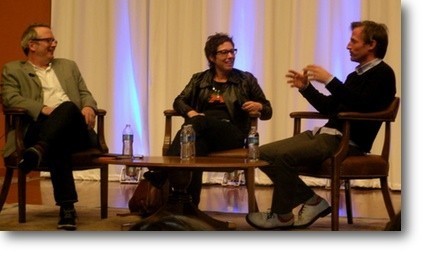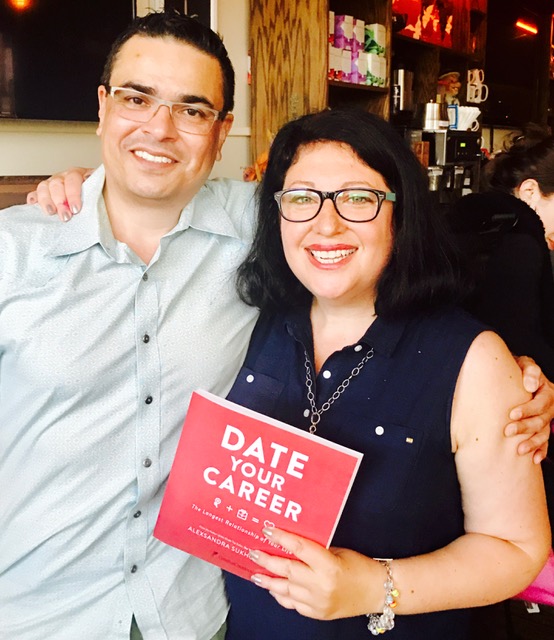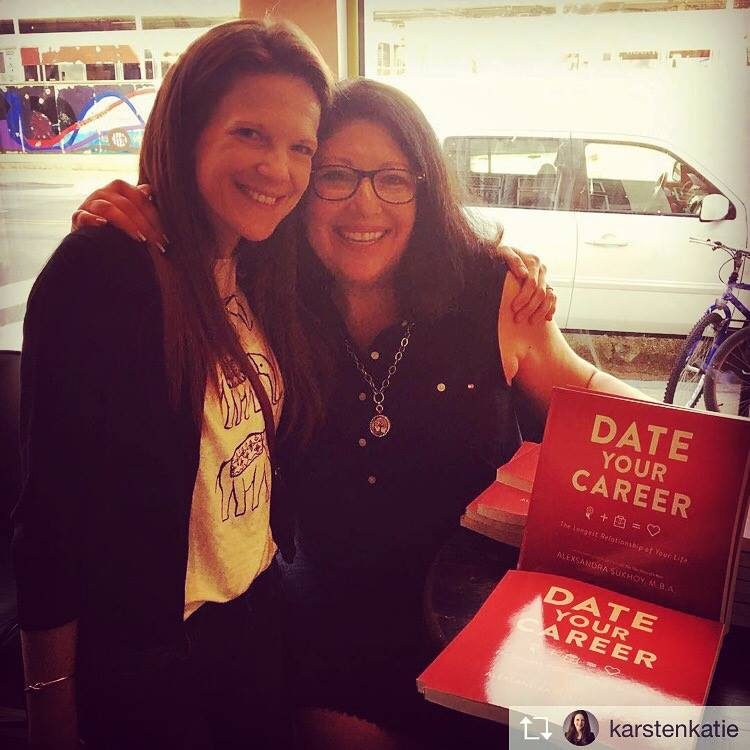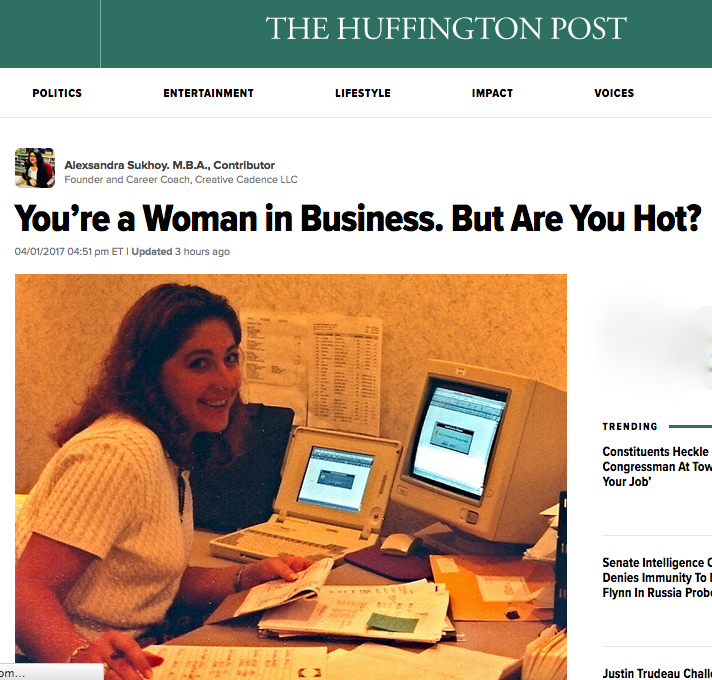- Begin Your Growth Plan Today!
- (216) 410-3825
- info@creativecadence.com
Bliss vs. Bills: Spike Jonze, Lisa Cholodenko & Ted Hope discuss indie films & doing what you love
Back in 1994, while supporting myself as a communication student at DePaul, managing a card and gift shop at Water Tower Place, life was, at the very least, complicated. Taking on way more responsibility, personally and professionally, than one should at that age meant lots of long hours, hard work and making use of the only free time on the schedule – while riding the el – to enjoy life’s little pleasures.
This mostly meant plugging into my white Sony Walkman and staring out the window of the morning work train, trying to find something new in the old brick buildings that ran along the train lines, observing the faces of the familiar passengers and, often, creating a story, no, a hundred stories about what everyone was doing with their lives: Where is the tired, young mom taking her restless kids so early? Why did that middle-aged man leave the house with a wrinkled shirt and too short a tie? What is that elder lady in the hat thinking about when she tightly holds her pocketbook with both hands?
Sometimes on these urban excursions, if you paid attention, you’d see something out of the ordinary. Like the one daybreak, just a year before, when, at the Lawrence stop, I saw a figure sitting on the steps of the Aragon, a century old Chicago landmark. At closer look, with the sun rising just East of the theater, I realized it was none other than Kurt Cobain, smoking a morning cig. Nirvana performed the night before and he probably hadn’t even gone to bed yet. There he was: the new music messiah, sans his rock ‘n roll rage, sitting on cold metal, in total tranquility, looking over the city that was my home.
Yet most days, the commutes were rather ordinary. Day in, day out, all of us, on our obligatory journeys, sometimes brief and sometimes lengthy, shared this ritual of getting somewhere, propelling forward, advancing the plotlines of our own lives, characters in our imagined screenplays. Part Groundhog Day and part Memento, we always knew how the story would end and, yet, hope still prevailed. This never-ending series of vignettes, sound-tracked by whatever my Walkman played, let the imagination soar, even at a time of tremendous confusion, pressure and uncertainty.
Entertainment, politics and the economy shifted into unfamiliar territory and the music of our youth eroded away, with the most prominent artists of the past decade going through their own bizarre stages of self-discovery: Michael Jackson turned white and Madonna went from sexy to Sex. Who did they become and where did the Michael and Madonna that we knew and loved go? Why was everything changing and could we really change with it?
Ben Lieblich, a full-time business consultant and part-time commentator on Gen-X culture, remembers this shift: “By the mid-1990s, alternative music fell victim to its own success. It had ceased to be “alternative” at all and had taken over the Top 40. Lollapalooza could no longer find up-and-coming acts and put Metallica, Cheap Trick, Devo and Waylon Jennings on stage. Here in DC, the 9:30 Club – a dingy, overheated venue featuring the best of ska, punk, and everything alternative – shut its downtown doors in December 1995 and moved two miles due north, into a big, beautiful, modern cube. The acts were the same, but the feeling had changed irrevocably.”
The shift, both internal and external, wasn’t limited to culture alone; it also dominated every sphere of influence around us. We were in college, or graduating, with debt, low paying jobs and a war in the news. Like Winona Ryder’s Lelaina in the decade’s defining Reality Bites, we didn’t know if we should pursue culture or commerce: one provided security while destroying our souls; the other expressed our passions yet wouldn’t pay the bills. In 1994, an entire generation mourned the passing of Kurt Cobain and our own innocence. Collectively, we all felt like that Pink Floyd “Comfortably Numb” lyric: “The child is grown, the dream is gone.”
That year, a group of three Brooklyn musicians calling themselves The Beastie Boys released a song called “Sabotage”: loud, raw and intense, most of us Gen Xers don’t really recall the first time we heard the song. What we do remember is the video: an homage to ’70s police shows, the low budget chase of cops and robbers in faux Burt Reynolds mustaches, running through urban grit while the heart-pounding music blared through the tv sets and into our senses. Even my retail boss, a proper young woman born into privilege and class, couldn’t stop talking about this video.
The man behind the video was an up-and-coming director who rose up from the skateboarding and magazine world: Spike Jonze. People weren’t really sure what to make out of Spike and his visions but, with A-listers Kim Gordon, Bjork and REM all calling, he emerged as a unique visual voice at a time when music was finding its new post ’80s identity: grunge, dance pop, neo-alternative and hip-hop dominated the airwaves and somehow Spike connected with each genre, showcasing each distinct flavor, creating the magic spice that turned each performance into the pre-YouTube water cooler topic du jour. Who could ever forget Christopher Walken’s memorable dancing performance in Fat Boy Slim’s “Weapon of Choice?” Who even knew that Mssr. Walken was a classically trained dancer? Spike did and with his visionary videos, he let us into his innovative mind, seeing the world through a completely unique perspective during a decade that seemed to make very little sense.
In the nearly two decades since “Sabotage” first premiered, Spike Jonze has added a robust body of work to his name, as he expanded into film and delivered award-nominated and winning gems such as Adaptation, Being John Malkovich and, most recently, Where the Wild Things Are. The Cleveland Public Library, recognizing his impact, invited Jonze, along with accomplished writer / director Lisa Cholodenko (High Art, Laurel Canyon and the 2011 Oscar-nominated film The Kids Are Alright) and award-winning producer Ted Hope (21 Grams, In the Bedroom, American Splendor) to Cleveland. Part of its annual Lockwood Thompson Dialogues, “which are presented by the Cleveland Public Library in partnership with Cleveland Public Art,” the event, focused on independent film, drew in over 300 attendees including Cleveland Film Commissioner Ivan Schwarz, local film students and professors as well as relevant filmmakers.
To anchor the event, Hope, who facilitated the dialog, began by providing a certain perspective about the business of making movies. According to Hope, every year, “7000 movies get made, 600 are distributed, 125 are picked up by studios and fifteen get nominated.”
As Cholodenko, Hope and Jonze discussed the business of show-business, including the industry and the craft of movie-making, they broke down the Hollywood myths many in the audience would associate with people of this caliber. Cholodenko, who is branching out into commercial studio projects, is nervous about adapting someone else’s story to the big screen, revealing, “Where am I going to get screwed?” Jonze admitted that he left L.A. and moved to New York because the pressure of hearing who was working on what project wasn’t conducive to his work. He wisely replied to his colleague’s concerns, “You’re probably paranoid for a reason.” Hope, who is acknowledged with sixty-four production credits on IMDB, revealed that sometimes he takes on multiple consulting jobs in order to pay the bills.
Cholodenko discussed how funding is often a trade-off and the creative decisions she has to make – auctioning off roles vs. getting the project made – are things frequently on her mind. “Where do I say, ‘I can compromise to meet their mandates?’ How to balance is very complicated.”
Jonze openly divulged the frustration he experienced making Where the Wild Things Are – his first studio film. “A script can be executed in many different ways. In their (studio execs’) eyes, I made the most sad version of the script.” Added Jones, “I didn’t make it for the parents. I made it from a feeling from within. That’s the priority I have to protect.”
All three professionals discussed a myriad of topics and, after, very generously answered what felt like a never-ending series of audience questions. When a recent college grad asked what kind of advice they would give young filmmakers, all three concurred that it’s all about the work and about figuring out your niche. Per Ted, “I don’t have the artistic backbone to be a director. But (as a producer) I (knew) I could protect other directors…My job is selling someone else’s dream and then bringing it back to reality.” Advised Cholodenko, “Go on sets and see if that’s what you’re attracted to… Keep your antenna up.” Both Hope and Jonze agreed on the importance of doing the work. Per Hope, “The art of making stuff begets more stuff.” Confirmed Jonze, “For me, it was always about making things.”
Hope also chimed in on how he’s fascinated that today’s youth – and even Jonze, who, while in high school, made videos on the camcorder – never ask permission to create content. How they just do it. He even referred to an anecdote that he was once discussing a project issue with his partner and his 10-year-old son, listening in and not understanding what the big deal was, looked up at dad and said, “I have a production company!”
A consistent thread binding the cinematic trio, even with all the struggle, hard work and frustration, is that none could see themselves doing anything else. And, that, as youngsters, this film world appeared completely out of reach. Per Lisa, “This always seemed like an industry a million miles away.” Added Jonze, “I never thought that filmmaking was something I’d get to do.” And Hope, in an honest yet animated remark, confessed that, “I started seeing movies. One day I applied to film school. And then I forgot. One day, I got a letter that said I got into NYU.”
Each artist also shared what was that tipping point of inspiration and Jonze spoke to an entire generation by joyously revealing, “I loved Michael Jackson’s ‘Thriller’ video.”
The entire evening felt like a curtain lift to – besides the government – is the most heavily veiled enterprise currently on the planet. And this honesty and perspective resonated with the creative community attending the event. Per April Nemeth, a local graphic designer, entrepreneur and owner of Little Korboose, “Lisa Cholodenko was eloquent and well-spoken and I really loved listening to her talk about her backstory. Extremely intelligent woman. Listening to Spike Jonze was also a treat (in a more casual way) – with his Ollie-scuffed shoes and holes in his sweater and trousers – he looked like he just came in from a skate session. Overall a really engaging event!”
Local producer Tyler Davidson, of Strange Matter Films, whose recent masterpiece, Take Shelter was both an official Sundance and Cannes selection, also enjoyed the frankness. “I appreciated how all three filmmakers cited working outside of the Hollywood system as a means of focusing and inspiring work that would eventually be celebrated by the very industry they circumvented. That’s independent filmmaking at its best.”
As the dominating 1994 question of culture vs. commerce persists today, three accomplished, talented, award-winning, highly-recognized industry names openly revealed the truth of a media platform that, even with all the ADD-fueling competition, still draws students to film programs across the country. And, at a time where I ride the metaphorical el, deciding daily whether to get off the Bliss or Bills train stops, I realized that my journey, leading to my current profession of teaching film to a whole new generation of creative souls – many of whom can never see themselves doing any else – is no accident.
Everything we do, every decision we make, every compromise we choose, leads us to where we are today. We are our own writers, actors, directors and producers, broadcasting our own truths. No one better, no one worse. It doesn’t get any more independent than that.
Additional Information…
The Cleveland Public Library: http://cpl.org
The Greater Cleveland Film Commission: http://Users/SVoloshin/Dropbox/MAMP/creativecadence.clevelandfilm.com
Take Shelter: http://Users/SVoloshin/Dropbox/MAMP/creativecadence.imdb.com/title/tt1675192
Little Karboose: http://Users/SVoloshin/Dropbox/MAMP/creativecadence.littlekorboose.com
Ben Lieblich: http://Users/SVoloshin/Dropbox/MAMP/creativecadence.linkedin.com/in/benlieblich
Reprinted with permission and gratitude from CoolCleveland.com.






